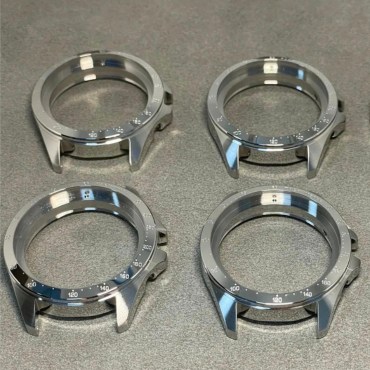Prototyping is essential in the fast-moving consumer goods industry. A prototype is a concrete, realistic representation of a product before it goes into mass production. This stage allows designers and engineers to test ideas, integrate user feedback, and realize the functionality and quality of the final product. Prototypes address design flaws at an early stage, saving production time and resources and greatly reducing the risk of costly post-release product corrections.
Tirapid has produced 10K+ prototypes for many start-up companies, design companies and manufacturing enterprises, and has accumulated rich technical experience. At the same time, we assist designers to provide feasible manufacturing solutions to help your brand go to market quickly, which is better than your competitors in terms of price and delivery.
Consumer Product Prototyping Success Stories






Customized Cell Phone Case
Material: Aluminum/ Titanium alloy
Why do You Need to Prototype Consumer Products?
By identifying problems before high-volume production, prototyping can reduce the cost and time of modifying the finished product.
If it goes directly into production without prototype certification, it may result in rework or scrapping.
Prototyping is a more cost-effective way to anticipate and solve these problems, thereby avoiding more risks.
Prototyping allows engineers to verify the manufacturability of a product design, including functionality, materials, and overall user experience.
Through prototyping, the team can ensure that the product design is both theoretically innovative and practical in practice.
Prototypes can help designers discover problems such as structural weaknesses or user difficulties.

Prototypes are able to be market tested in small batches to gather feedback from potential users before the product is completed.
With user feedback, the market acceptance and success of the final product can be improved.
By testing the market response, the product can be adjusted to better meet consumer needs and expectations.
Prototyping is an important driver of technological innovation.
By testing prototypes, designers and engineers can explore new design concepts and technologies and achieve continuous product improvement and optimization.
This process of experimentation and discovery is key to driving product and technology development, helping companies stay at the forefront of the market.
Manufacturing Technology for Consumer Product Prototypes
- CNC Machining: Provides precision and versatility for creating high quality metal and plastic parts.
- Sheet Metal Fabrication: Particularly suitable for durable and functional prototypes that require metal parts.
- Rapid Tooling: Provides fast turnaround time for injection molded prototypes, greatly accelerating the prototyping process.
- 3D Printing: Allows rapid, cost-effective creation of complex designs, facilitating rapid iteration and innovation.


Material Considerations
Choosing the right materials for your prototype is critical to success. Material selection is based on the functional requirements of the product, durability needs and aesthetic considerations.
- Plastics
Favored for versatility and cost-effectiveness - Metals
Widely used for their superior strength and durability - Composites
Praised for high performance in specific applications


